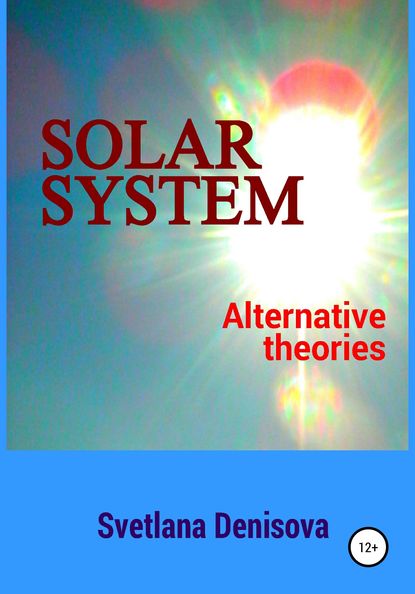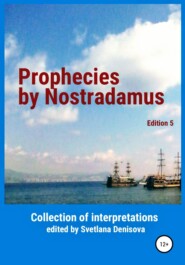По всем вопросам обращайтесь на: info@litportal.ru
(©) 2003-2024.
✖
Solar system / Alternative theories
Автор
Год написания книги
2017
Настройки чтения
Размер шрифта
Высота строк
Поля
) ~282600km.
Let's calculate, what the Earth speed would be, if centrifugal force were equal to the gravity force 35,425n.
v= ? (F
*R/m
),
v= ? (35,425*10
*1.49598*10
/5.97219*10
)=2.9789*10
m/s
The difference between the actual and calculated speed is: 2.9789*10
-2,978*10
= 0.0009*10
m/s. That is speed of the Earth at ~9 m/s is less, than it should be at the stable orbit.
Based on the assumption, that orbits dynamics was such for a long time, and by "scrolling" the time back, we receive, that all the basic planets SS (except Koiper belt) were initially closer to the asteroid belt and to each other.
Influence of the space bodies mass on the forces ratio
The insignificant increase of a planets mass can occurs due to the falling on them of various space bodies: meteorites, asteroids, space dust and others. The change of planets mass equally influences both counteracting forces and does't break their ratio. Perhaps, planets can lose their mass, for example, due strong eruption, as on Mars. The masses of the planets can be considered relatively permanent, that can not be said about the stars.
The change of the Sun mass does not affect the centrifugal force, but it changes the gravity force. A slight increase of the sun mass occurs, as in the case with planets, due to the fall of various space bodies onto it. Given the size of the Sun and the gigantic force of gravity, the falls occur much more often, than on planets. This process has an accidental nature, and its influence to the orbits of the planets is negligible and can be ignored.
The stars mass decrease due to their continuous burning has a much greater impact on the orbits. The burning Sun loses about 4.26 million T/s or 1.34*10
tons/year [Wikipedia]. Not only the Sun, but also the other stars have the process of burning and decrease of the mass. Now the age of SS is about 4.6 billion years. It was determined by the fallen meteorites. Although there’s no guarantee, that they belong to SS and were formed simultaneously with it! As the other data regarding SS age is absent, the mass of the Sun 5 billion years ago, perhaps, was about 1.98977*10
tons, taking into account the decrease coefficient. During all this time the Sun has lost 6.7*10
tons, that is, approximately, equal to two masses of Mercury, which is a little amount. Perhaps, there is a hidden mass (decay), which the Sun loses much quicker?
This factor should have the constraining impact on the descending orbits and, on the contrary, the accelerating influence on the ascending orbits. The SS age and the speed of the Sun mass decrease raise big doubts. Most likely, the Sun age and the speed of the mass decrease are much greater. Possibly, when SS was young, all planets were arranged in a more compact way, closer to asteroids belt. The Sun mass was and energy sufficient enough, to were the life conditions on the farthest planets. Conditionally, the distance from the Sun can be divided into 3 zones:
1st, close to the Sun, may be called conditionally a "red zone", where it is very hot;
2nd, average, may be called a "green zone", where the temperature is from -50
to +50
C, it is a zone of life;
3rd, distant, may be called a "blue zone", where it is very cold.
Now the Earth is in the "green zone". There are pyramids on Mars, therefore, much earlier this planet was warmer, and it had conditions for life and construction. If we assume, that initially the "green zone" was behind the asteroids belt, the giant planets could pass through the zone of life in the process of decreasing solar energy. Earth at that time was in the "red zone". It is known, that in the most ancient times the climate was warmer, then gradually it cooled down, and the Earth poles became covered by glaciers.
How can it be explained, if orbit descending follows from the calculation and there has to is a climate warming? Presumably, the "zone of life" descending quicker, than the orbits of the planets Mars, Earth, Venus and Mercury. It can explain the passing of Mars through the "zone of life". The Sun mass and energy are decreasing quicker, than descending of the orbits. It contributes to their cooling.
3. Destructions in the Solar System
Nowadays there is a generally accepted view, that giant planets: Jupiter, Saturn, Uranus, Neptune have always been the gas spheres. In my opinion, it is absolutely untrue. They were the same, as the solid planets: Earth, Venus, Mars, Mercury. It is very likely, that during the "young Sun" life and civilizations existed on them. These planets, making up the bulk of SS planets, have been destroyed, apparently, due to the one reason.
Gas giants have the similar characteristics:
– the absence of a solid crust;
– low density;
– rapid axial rotation (10 hours/day, Neptune – 16 hours/day);
– the presence of fragmentary satellites in the nearest orbits;
– the presence of rings;
– a similar composition of the atmosphere.
What could lead to the destruction of the solid crust of these planets? The main difference between "gas" and "solid" planets is the presence of rings, consisting of dust, small and large fragments. Most likely, they were shattered satellites! The cause of the destruction of the giant planets could be the destruction of the satellite on the nearest orbit.
So the most part of SS planets has been destroyed. Behind the Mars's orbit is zone of destructions. The planet Phaeton between Mars and Jupiter orbits has been completely destroyed and has formed a belt of asteroids. Ceres – the moon of Phaeton and some other satellites, not of lunar type, has remained on this orbit. Four gas giants: Jupiter, Saturn, Uranus, Neptune have the destroyed crust, but they kept the spherical form. May be, in the Kuiper belt, the crust of several dwarf planets has been destroyed also. Only 4 small planets: Mercury, Venus, Earth, Mars and few dwarf planets of the Kuiper belt, remained intact. All this proves, that SS is very old.
Destruction of a solid crust of planets became the reason of increase in their volume and reduction of density. If we assume, that before destruction their density was equal to the Earth’s density 5515 kg/m
, it is possible to estimate their volumes before destruction, having divided mass on 5515 kg/m
. The calculation results are shown in Table 3.
Using the calculated volume (l.1 tab.3), it is possible to calculate the radius of planets before destruction (l.2 tab.3) by a formula: R
=3V/4?. Table 3 shows, that Saturn has the greatest coefficient of increase 2.07, and the Neptune has the smallest coefficient of increase 1.48 (l.3, tab.3). The Uranus before destruction was smaller in volume, than Neptune and after the destruction became larger than it. On the basis of the calculated data, received in table 3, it is possible to present an evident expansion of planets after destruction.
The picture shows a significant increase in the size of gas giants after the catastrophe. After destruction of planets, the speed of axial rotation has considerably increased, on average up to 10 hours/day, except the Neptune – the 16 hours/day. Increase in the equatorial diameter is a result of high-speed axial rotation of these planets. Some dwarf planets have similar characteristics, for example, Houmea. Perhaps, their crust has been destroyed too.
The waters of the oceans poured down into the cracks, and the fire burst forth out of the cracks toward the waters. The two confronting elements, water and a fire, have merged in the last dying battle. As a result of exposure to the high temperatures and, probably, nuclear reaction the chemical compounds disintegrated. Hydrogen (H) and helium (He) filled atmosphere:
Jupiter Н-89.8%, Не-10.2%, p-1.326 g/cm
;






